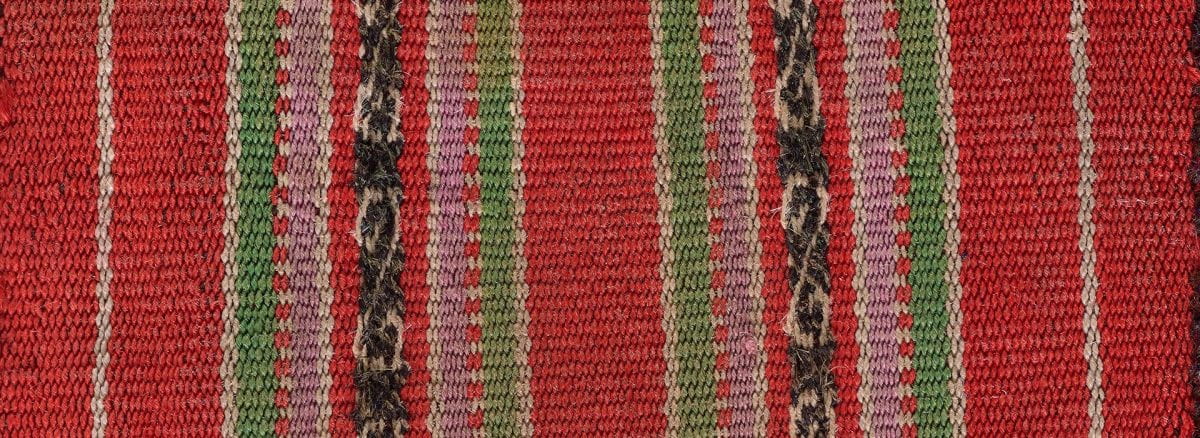This small bag, a “huallqepo,” was made to hold coca leaves — an integral part of daily life for the Aymara people on Bolivia’s highland plateau since pre-Hispanic times. Chewed as a stimulant, coca leaves counteract the effects of oxygen-thin high altitudes and feature in ceremonies marking life passages and as offerings to mountain deities or “waka” and Mother Earth.

The huallqepo’s form makes it functional while leaving room for creative design. The fiber often comes from domesticated alpacas or llamas and is spun with a drop spindle, then double-plied by spinning in the opposite direction. By the late 19th century, aniline dyes imported from Europe began replacing natural dyes to create colors and patterns that differed from one community to another. This bag, missing its strap, includes solid stripe yarns dyed in red, green and lavender (most likely aniline dyes), and undyed yarn in pattern stripes.

In Bolivia, coca bags and other small weavings are made on portable backstrap looms. The S-patterned stripes on this bag were made using a complementary warp weave with different colored yarn pairs warped together. During the weaving process, one of the colored yarns created the pattern on the front while the other created a mirrored pattern on the back, resulting in a two-faced cloth.
Traditionally produced coca bags are still created and used in local communities. They are also increasingly sold to tourists through weaving cooperatives alongside mass-manufactured bags in tourist markets.
